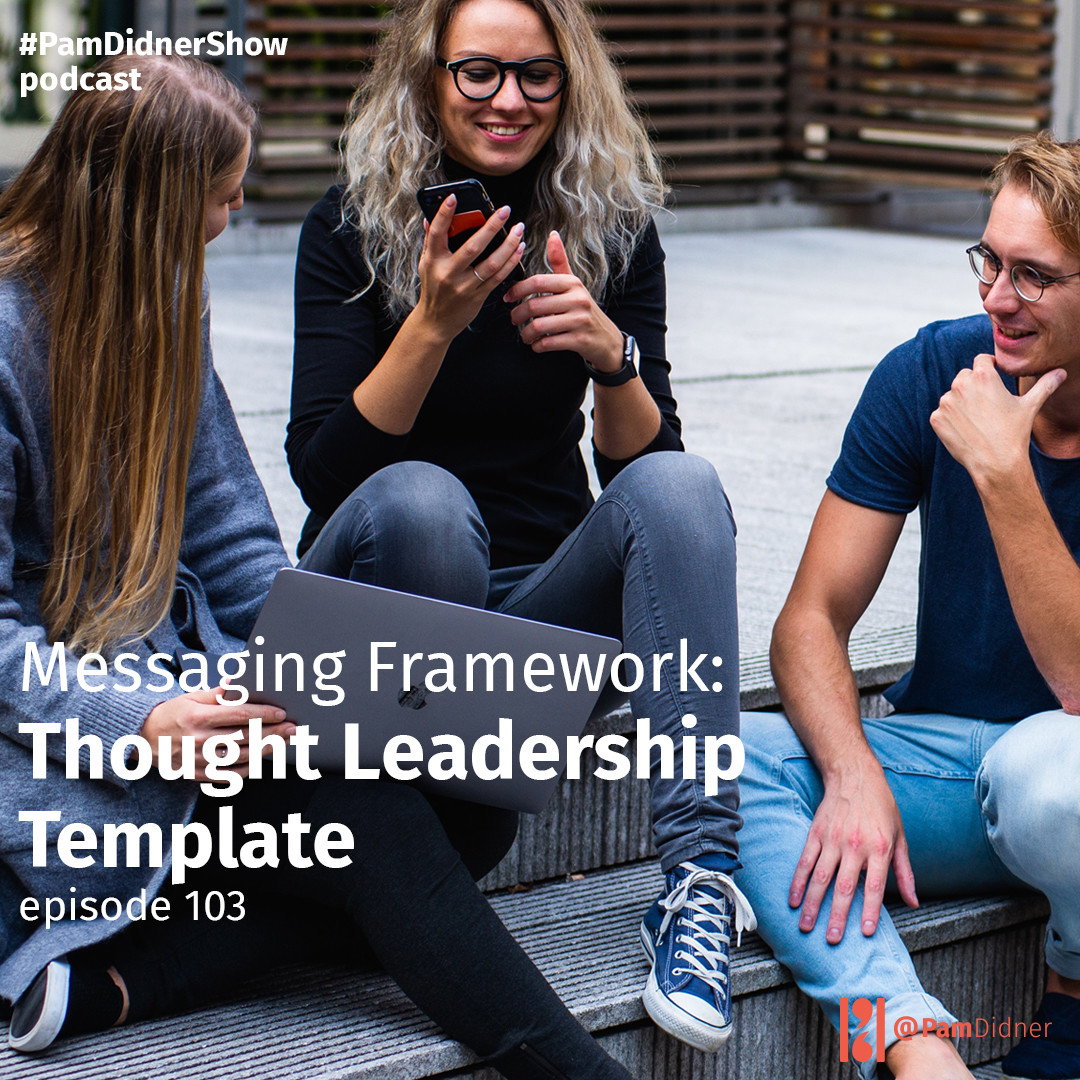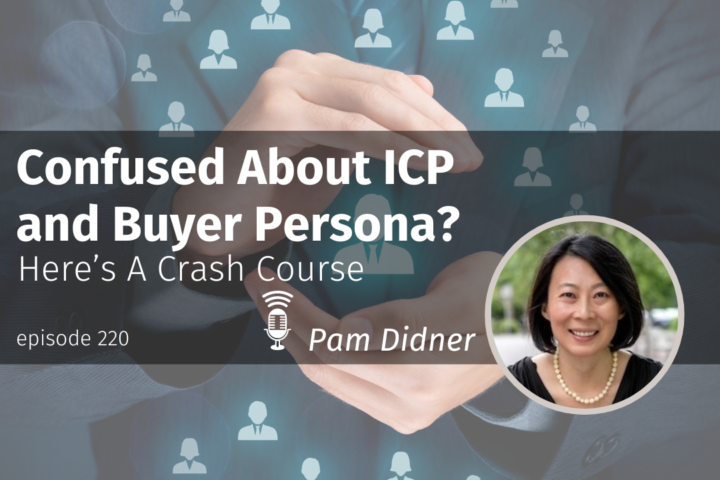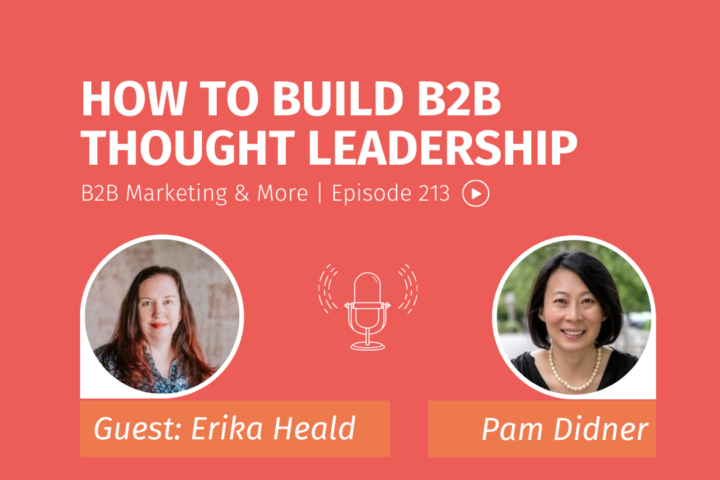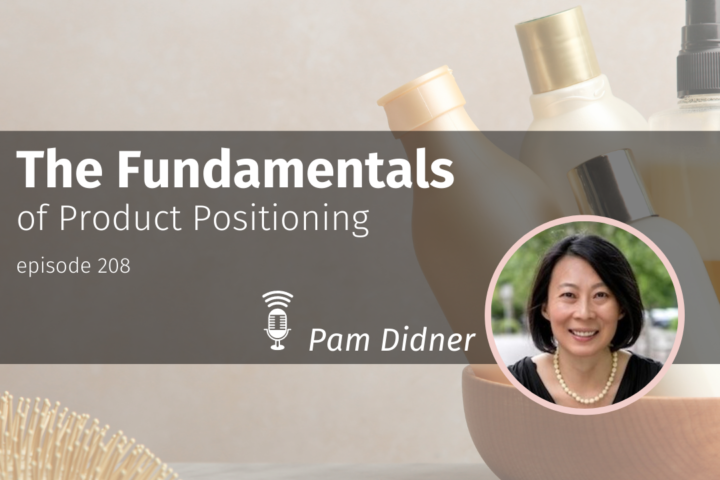
Welcome to another episode of B2B Marketing and More with Pam Didner. This is a podcast that I share my know-how and templates. I want to help you see B2B marketing from different lights and be a better B2B marketer.
Messaging and positioning are the most under-rated tasks in marketing. Worse, crafting messaging is just not as much fun as creative development, story-telling, or content creation. I know.
Yet, messaging is a crucial and vital foundation for external communications and internal sales training. You may not create a messaging framework, but it doesn’t hurt to get a sense what it is and what elements should be included in a messaging template. The more you know about different aspects of marketing, the more you can connect the different sales and marketing dots.
On EP101, what are a messaging framework and the process of crafting a solid messaging framework?
On EP102, I shared a product-specific template
For this episode, I want to talk about a thought leadership messaging template.
Thought-Leadership Messaging Framework Template
Brands love to be perceived as thought leaders. Before creating a thought-leadership story, you also need a messaging framework.
I shared the product-specific template on EP102. The biggest difference between product-specific and thought leadership templates are the narrative and the ability to explain “why” your company is a thought-leader.
For product-specific template, you need to start with a product.
For thought leadership template, you need to start with an objective statement to explain what this messaging framework is about.
Address the company’s role and its differentiator in the future of a mega-trend or an industry segment.
Target Audience
Again, let’s focus on ONE target audience. For whom are we creating this thought-leadership story? This also needs to tie back to the company’s primary buyer’s personas.
Overall Narrative
The key difference in thought-leadership messaging development is to explain “Why.” You need to identify your product or technology category that you are unique and explain why it is critical for your target audience. This section needs to be written in paragraphs, not bullet points.
Company-Specific Narrative
Once you explain why the product or technology category is important, you can proceed to describe why your company has the best answers to the challenges in this product or technology category.
Again, you need to write 3-4 short paragraphs to explain the ‘WHY’.
Value Proposition of [Company Product Portfolio]
Now the spotlight is on the ‘thought’ leadership value proposition. Rather than focusing on product-specific value propositions, you need to elevate the company and create one statement that showcases the overarching benefits of your company to target audiences.
I usually create several statements and let clients choose. Clients love to analyze my proposals for the one statement they should use. We go through each one and determine the pros and cons.
One example of the company’s value proposition is to
XYZ company AI-based solutions accelerate your sales conversions for your sales team. by intelligently serving up relevant personalized content.
Benefits of [Company Product Portfolio]
Once you identify the value proposition, it’s important to talk about the benefits of your company’s product portfolio. How does the company’s product portfolio help the target audience reduce cost, maximize value and increase revenue?
XYZ company AI-based solutions accelerate your sales conversions for your sales team by intelligently serving up relevant personalized content.
Messaging Positioning
I use the ‘Rule of Three!’ It’s important to identify three key trend-based or strategic pillars that you want to talk about as a thought-leader. One of the messaging pillars is artificial intelligence. Tie your narrative to your key leading trends to showcase your leadership position.
Impact of Messaging Positioning
Once you have the strategic pillars, you can explain the impact of your company’s product portfolio in each pillar. Again, this can be bullet points and can be product-specific, if necessary.
Recommend personalized content by intelligently analyzing customer engagements from a various database.
Messaging Narrative
It’s important to write 2-3 paragraphs to further depict the stories in each pillar. Having short paragraph-driven statements helps guide content creators on what to write to tell a coherent and focused story. The messaging pillar is about AI and writes 2-3 paragraphs on how your products leverage AI to deliver customized solutions for your customers.
Proposed Thought-Leadership Content Topics
As part of the messaging framework, I always come up with suggestions for thought-leadership titles to help senior management visualizes the type of content that will be created. Again, I ask them which titles they like to gauge their preferences and help content creators determine the final titles.
Keywords for Content Creation
Again, I add a list of keywords that relate to my clients’ thought-leadership story. Agencies and content creators appreciate the keyword list because they can pick and choose from these keywords when they write the stories.
Here is a quick summary:
- Create a thought leadership messaging framework before writing your thought leadership story
- Use a template so guide your thinking process and rally the team
- Review with senior managers and PR to make sure that they agree with your value proposition and messaging pillars
Feel free to send me an email on pdidner.wpengine.com or contact me via various social media channels if you are interested in the template and written samples, OK?
Again, I’d really appreciate that you can like or subscribe to my podcast.
Before you leave, make sure to check out the previous podcast episodes!
Send me any messaging related questions. More than happy to answer your questions or have a good discussion with you.
Have a great day!!



